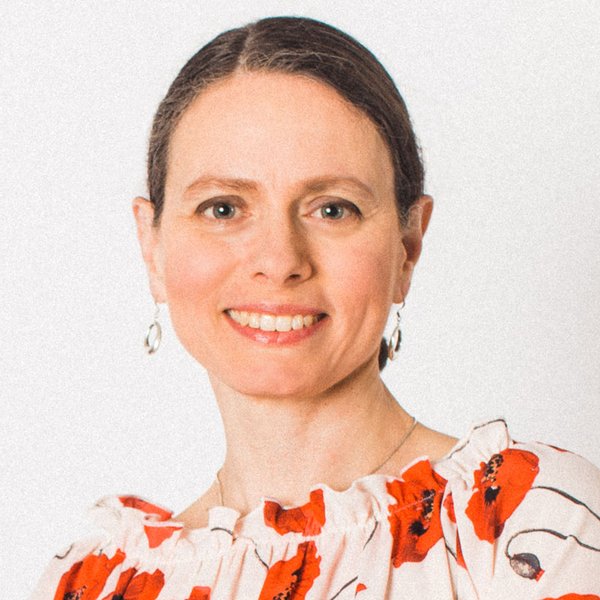
If you are not redirected within 30 seconds, please click here to continue.
Samedi: 10h – 16h HAE

If you are not redirected within 30 seconds, please click here to continue.
If you are not redirected within 30 seconds, please click here to continue.
Beyond RESPs: How to Save for Your Child’s Education

First smile. First word. First steps. First degree.
In this age of lifelong learning, a post-secondary degree or diploma is not only important for future prospects but may also be one step among many in your child’s educational experiences after high school.
Your child may get an undergraduate degree, then add a college diploma in a specialized field. Your child may go on to graduate studies or want to gain international experience and study abroad. There are several scenarios that you need to plan for because making sure your child gets the necessary education does not come cheap. Many parents want to help ease the financial debt burden on their kids, which stands at an average of $28,000 for an undergraduate, according to the latest numbers from Statistics Canada.
Fortunately, for parents who start early, the savings can add up to giving your child a leg up on paying for it.
- The costs
- RESPs
- Additional benefits of RESPs
- Withdrawing from an RESP
- Saving for education beyond an RESP
- Tips for saving
- The student’s responsibility
The costs
Here are some of the figures for Canadian students to give you a sense of what you may be looking at down the line. Note that this doesn’t include books, travel or living expenses for kids who go away for school, which can average nearly $20,000 a year, according to Maclean’s.
Undergraduate programs
Across Canada, domestic undergraduate university students paid $6,463 in tuition for 2019-2020, according to Statistics Canada. Average costs are different in each province and territory, and some programs cost more, such as professional degrees like dentistry ($21,717).
Additional fees add to the cost, which, on average, were $914 a year.
Graduate
The average graduate tuition fee for Canadian students in 2019-2020 was $7,056, according to Statistics Canada. This varies greatly by field of study, ranging from $56,328 for a master of business administration (MBA) to $5,178 in visual and performing arts.
The average additional compulsory fees were $871.
College
The fees depend on what certification you are aiming for, according to the Ontario College Application Service. For instance, the average cost of tuition for a year in an Ontario college program is:
- Diploma programs: $2,400
- Graduate Certificate programs: $3,600
- Bachelor’s Degree programs: $6,100
- Collaborative programs: $5,000
There is also an average of $800 in ancillary fees (student activity fees, athletic fees, health insurance, etc.) and $1,300 for books and supplies.
Tuition for specialized programs may be higher, and some programs may require you to buy extra equipment or supplies on top of the cost of tuition fees.
Of course, balancing out the cost of higher education is the potential career and earnings benefit for your child. So, how can you help them invest in their education?
RESPs
At least part of your savings plan should be a Registered Education Savings Plan (RESP). The key reason for this is the government kicks in extra money through the Canada Education Savings Grant (CESG) if your child uses it for an eligible post-secondary education.
What is an RESP?
An RESP is a savings vehicle that can hold a variety of investments, from equities to bonds. It can be held through a variety of organizations, from banks to credit unions and online brokers if self-directed. You can have multiple RESPs for a child in different locations, but collectively, they cannot be more than the $50,000 lifetime contribution amount.
RESP money can be used for tuition, accommodation, books or any other day-to-day expenses related to your child’s post-secondary education.
An RESP can be opened for a child by anyone – parents, guardians, grandparents, other relatives or friends. You will need to have a Social Insurance Number for the child.
If you have more than one child, parents or grandparents can open a family plan, as long as the children are under 21. The money can be distributed according to each child’s needs (for instance, if one goes to a more expensive program).
While the money is in the RESP, the growth is not taxable. It gets taxed when the child withdraws it, most likely at a low tax rate because students typically have smaller incomes.
RESP accounts can stay open for up to 36 years. That means if your child doesn’t want to get a post-secondary education after high school right away, all is not lost.
Pooled plans
Pooled plans, or group RESPs, are often marketed to new parents. Unlike self-directed RESPs, these come with generally higher fees and often inflexible rules around contributions and withdrawals. Your contributions are pooled with other people’s. The money your child gets is based on the amount of money in the pool and the number of students of the same age who are in school that year. Funds are invested mainly in fixed income, and the organization that runs the plan makes the investment decisions for you.
Additional benefits of RESPs
Depending on your circumstances, you may qualify for these additional benefits.
Canada Education Savings Grant
The Canada Education Savings Grant (CESG) is where the government will top up your contribution by 20%, or 20 cents for every dollar invested into the RESP per child.
The maximum the government will kick in is $500 a year per child, meaning you can put in up to $2,500 a child to get the maximum from the government per year. The lifetime limit for the grant is $7,200, but additional CESG grants may be available to lower-income families.
Canada Learning Bond
The Canada Learning Bond (CLB) provides an additional grant of up to $2,000 per child to help families with a low income, depending on the number of children in the family. For instance, a family with 1-3 kids and a household income of up to $47,630 would be eligible.
Withdrawing from an RESP
To withdraw money from an RESP, you will need to show that your child is enrolled in an eligible post-secondary institution, such as a university, college or apprenticeship program, including schools outside of Canada.
Once your child needs the money, it is not a matter of merely withdrawing it all, because taxes are paid on the government grants and any growth in the plan, but not on your contribution portion.
Start withdrawing from the grants and income part of the funds, or the Educational Assistance Payments (EAPs), early to make sure it gets used before your child is finished their post-secondary education. But don’t do it all at once, so you can minimize the amount of taxes paid on that portion.
You can use money left in the RESP for further education, such as graduate school, or you may be able to transfer it to another child in an individual plan (with a family plan, you can allocate the funds between children).
If your child is nearly done their post-secondary schooling and there is no other child, make sure you plan to withdraw all the funds from the RESP by the time your child is finished school.
Any grant portion left over will have to be repaid to the government. The growth portion may be transferrable from the RESP to your own Registered Retirement Savings Plan (RRSP), or withdrawn, but with penalties.
Restrictions
- If you started contributing after 2007, the lifetime contribution limit is $50,000. If you over-contribute, you will have to pay tax at 1% a month on the excess until it is withdrawn.
- If your child doesn’t get a post-secondary education, you can transfer the money to another child, to your Registered Retirement Savings Plan, or you can cash it in. But the money will be taxed on growth, with penalties, and you must return the government grant money. But remember, you have up to 36 years for your child to make this decision.
- For students enrolled in a full-time program, there is a limit of $5,000 on EAP withdrawals during the first 13 weeks of a program. Once those 13 weeks are up, there is no limit on additional EAP amounts that can be withdrawn, unless the student takes a break from schooling.
Saving for education beyond an RESP
If you have reached your annual limit to maximize the government’s contribution, or if you have reached your lifetime limit for an RESP, there are other ways to save for your child’s education.
High-interest savings account
Though growth will be small because interest rates are currently low, high-interest savings accounts are safe, in that they avoid the ups and downs of the stock market. You can withdraw the money at any time, for any purpose, and retain control of the money if, for instance, your child does not attend a post-secondary institution.
TFSAs
Though you could open a non-registered account to save for your child’s education, you would be taxed on any income or capital gains. Consider putting that money into a tax-free savings account (TFSA), where it can grow tax-free.
Trusts
Informal
Informal trust accounts are similar to regular savings accounts or non-registered investment accounts, except that they are owned ‘in-trust’ by the parent, grandparent or guardian on behalf of the child until they reach the age of majority. However, there are no formal trust documents signed. Some of the growth in the account may be taxable to the child at likely lower tax rates. The child owns the money and does not have to use it for education.
Formal
For more control over a trust account, use a formal trust, where a lawyer draws up papers that specify details, such as how the funds are to be used and when. Taxation is similar to an informal trust, but there are additional fees.
Life insurance
Parents or grandparents can use life insurance to fund a student’s post-secondary education. The funds in the insurance policy can be accessed in a number of ways, such as receiving annual dividends on the policy as cash payments, borrowing on the cash value of the policy, or cancelling the policy and withdrawing the cash value. Each method has its tax implications. Of course, the child could use the funds for other expenses.
Scholarships, grants and bursaries
Scholarships, grants and bursaries don’t need to be paid back. Scholarships are usually based on merit, while grants and bursaries usually consider financial need as well. Some are also based on academic achievement, athletic skill, extra-curricular involvement, or special abilities. There are hundreds of potential scholarships, grants or bursaries available through sources ranging from different levels of government to each school, certain businesses and charitable foundations. There are several searchable databases to help you sort through the options.
Tips for saving
Here are a few tips to help you save for a child’s education.
Automated deposits
Life can get busy and expensive, so if saving for your child’s education is a priority, consider setting up an automated deposit into an RESP with your financial institution. To get the maximum government grant, set the withdrawal at $208.33, but even a small amount will add up over time.
Lower risk
If your child is close to finishing high-school, you have maxed out your RESP contributions, and you have some extra cash to put away for your child’s education, you can consider some low-risk savings vehicles. The closer your child is to starting their post-secondary education, the more you want to make sure your money is not subject to the fluctuations of the stock market, as you have less time to make up for losses. Even in an RESP, consider shifting to lower-risk assets, such as bonds and GICs, the closer your child comes to needing the money.
Rewards points
Some banks allow you to use reward points to contribute toward their products, such as an RESP or a savings account. And HigherEdPoints has created partnerships with many loyalty cards, colleges and universities to allow members to redeem points toward tuition or paying off student loans.
The gift that keeps on giving
Consider asking friends and relatives to contribute to an RESP or other savings fund for your child’s education instead of toys for special occasions.
The student’s responsibility
Even if you can afford to pay for all of their education, consider asking your child to pay for at least some of their education themselves, making them more invested in the process and helping them learn financial responsibility.
Get money-saving tips in your inbox.
Stay on top of personal finance tips from our money experts!










